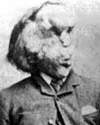
On 5 Aug 1862 Joseph Carey Merrick was born, who even while still an infant started to show the disfigurement for which he was to become known as “the Elephant Man.” He lived to only age 26. His final years were spent as a resident patient of London Hospital.
He was the subject of newspaper reports, and journal articles by Dr Frederick Treves, who compassionately studied Merrick's condition.
When Merrick died in 1890, The Speaker published a sympathetic story on his life, though under the heading The Story of an Outcast. In the Medical Mirror, the Obituary for Joseph Merrick, was also respectful. An article published earlier (New York Medical Abstract, 1886) on The “Elephant Man” summarized Dr. Treve's medical description from the British Medical Journal. (The copy on this site has images added from a 1901 medical book of the doctor's illustrations of the deformities which affected Merrick's whole body.)
You surely already have heard of the “Elephant Man,” but these three articles will give you a direct impression of how Merrick was viewed at the time he was alive, and before a modern diagnosis was possible.

On 5 Aug 1930, Neil Armstrong was born, the American astronaut who became the first man to set foot on the moon. Today's book pick is: First Man: The Life of Neil A. Armstrong, by James R. Hansen The excitement felt by those of us who watched that momentous event is unforgettable. Even this very night, tonight, even if you didn’t see the live transmission, to simply gaze up at the moon and realize a man travelled there remains jaw-dropping. Would you sit atop a rocket at launch, knowing the risks of never returning? In this book, the career of the first man to walk on the moon includes his years as a fighter pilot in the Korean War. Flight logs, family and NASA archives—and over 125 original interviews with key participants—provide flesh-and-blood reality for the reader of this book. Of those who reviewed it for Amazon, 84 of 115 readers gave it 4, and mostly 5 stars.
It is available from Amazon, typically about New from $57.50. Used from $3.20. (As of earlier time of writing - subject to change.)
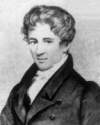 | The divergent series are the invention of the devil, and it is a shame to base on them any demonstration whatsoever. By using them, one may draw any conclusion he pleases and that is why these series have produced so many fallacies and so many paradoxes. |
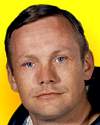 | In flying, the probability of survival is inversely proportional to the angle of arrival. |
| no image | We have one great guiding principle which, like the pillar of cloud by day, and the pillar of fire by night, will conduct us, as Moses and the Israelites were once conducted, to an eminence from which we can survey the promised scientific future. That principle is the conservation of energy. |
| Before you look at today's web page, see if you can answer some of these questions about the events that happened on this day. Some of the names are very familiar. Others will likely stump you. Tickle your curiosity with these questions, then check your answers on today's web page. | |
| Births | |
 | On 5 Aug 1930, Neil Armstrong was born, who became the first man to step onto the surface of the moon. He began as a civilian test pilot, and gained experience on an earlier space mission before acting as commander of the Apollo lunar mission. From 1971, he taught as a professor of aerospace engineering. Before the moon flight, on which earlier mission did he fly, and what was its major test objective? |
 | Joseph Carey Merrick (erroneously referred to as John Merrick) was a disfigured person, born in Leicester, England, on 5 Aug 1862. Merrick began to develop tumors on his face before his second birthday. His condition quickly worsened. Bulbous, cauliflower-like growths grew from his head and body, while his right hand and forearm became a useless club. After a brief career as a professional “freak,” dubbed the “Elephant Man,” he became the best-known resident patient of London Hospital from 1886 until his death. What feature evoked the name “Elephant Man”? |
| Deaths | |
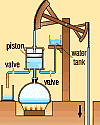 | Thomas Newcomen (1663-1729), inventor of the atmospheric steam engine, died in London. His invention of c.1711 came into use to pump water. It had a piston connected to one end of a large crossbeam; the other end was connected to a very heavy pump piston. On each stroke, water chilled and condensed the steam in the cylinder, dropping the piston thus moving the crossbeam and operating the pump. This was wasteful of fuel needed to reheat the cylinder for the next stroke. Although it was slow and inefficient, Newcomen’s engine was relied on for the first 60 years of the new steam age it began. Where in industry was this invention used? |
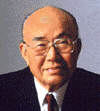 | Soichiro Honda (1906-1991) was a Japanese engineer, race car driver and industrialist. He began in manufacturing with a piston-ring factory (1934). After World War II, he expanded into producing vehicles (1948). What kind of vehicles did he produce after WW II? |
| Events | |
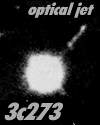 | On 5 Aug 1962, a lunar occultation enabled Australian radio astronomers to more precisely fix the location of the previously known radio source 3C 273, in Virgo. In 1963 this became the first member of a new class of object eventually to be called quasars. What does the name quasar mean? |
Fast answers for the previous newsletter for August 4: pencil • flying kites • behavior of chromosomes • illuminating gas • the decade including the year 1958 • in memory of Alexander Graham Bell, who had died two days earlier.
 If you enjoy this newsletter, the website, or wish to offer encouragement or ideas, please send feedback by using your mail reader Reply button.
If you enjoy this newsletter, the website, or wish to offer encouragement or ideas, please send feedback by using your mail reader Reply button. Your click on a Facebook, StumbleUpon, or other social button on the site webpages is also a welcome sign of appreciation. Thank you for using them.
© This newsletter is copyright 2020 by todayinsci.com. Please respect the Webmaster's wishes and do not put copies online of the Newsletter — or any Today in Science History webpage. (If you already have done so, please remove them. Thank you.) Offline use in education is encouraged such as a printout on a bulletin board, or projected for classroom viewing. Online, descriptive links to our pages are welcomed, as these will provide a reader with the most recent revisions, additions and/or corrections of a webpage. For any other copyright questions, please contact the Webmaster by using your mail reader Reply button.
--
If you do not want to receive any more newsletters, Unsubscribe
To update your preferences and to unsubscribe visit this link
Executive Real Estate Business Class
-
"It was like a man with wings. It wasn't like anything you'd see on TV or in a monster movie." ...
About the publisher
Search This Blog
Blog Archive
-
▼
2021
(585)
-
▼
August
(32)
- Newsletter for Tuesday 31 August.
- Newsletter for Monday 30 August.
- Newsletter for Sunday 29 August.
- Newsletter for Saturday 28 August.
- Newsletter for Friday 27 August.
- Newsletter for Thursday 26 August.
- Newsletter for Wednesday 25 August.
- Newsletter for Tuesday 24 August.
- Newsletter for Monday 23 August.
- All-New Tonight: 'The Machines That Built America'
- Newsletter for Sunday 22 August.
- Newsletter for Saturday 21 August.
- Newsletter for Friday 20 August.
- Newsletter for Thursday 19 August.
- Newsletter for Wednesday 18 August.
- Newsletter for Tuesday 17 August.
- Newsletter for Monday 16 August.
- Newsletter for Sunday 15 August.
- Newsletter for Saturday 14 August.
- Newsletter for Friday 13 August.
- Newsletter for Wednesday 11 August.
- Newsletter for Tuesday 10 August.
- Newsletter for Monday 9 August.
- All-New Tonight 9/8c: Telephone Wars
- Newsletter for Sunday 8 August.
- Newsletter for Saturday 7 August.
- Newsletter for Friday 6 August.
- Newsletter for Thursday 5 August.
- Newsletter for Wednesday 4 August.
- Newsletter for Tuesday 3 August.
- Newsletter for Monday 2 August.
- Newsletter for Sunday 1 August.
-
▼
August
(32)
-
Blogroll
-
About
HistoryFact










0 comments:
Post a Comment